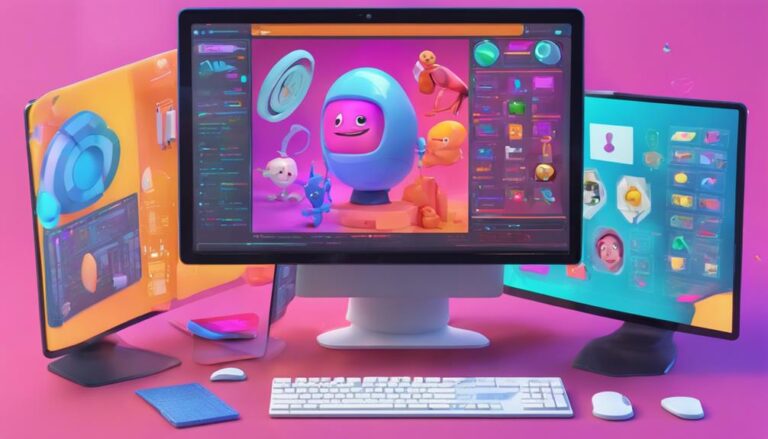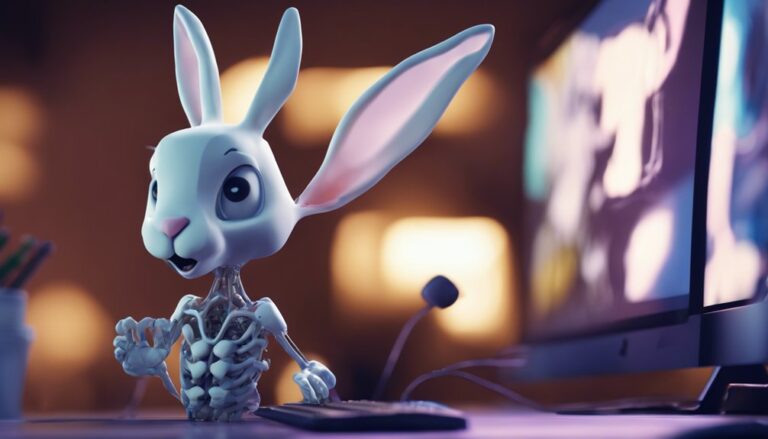3 Best Cartoon Character Principles for Beginners
When you crack open the secret recipe book of beloved cartoon characters, you'll discover that simplicity, charm, and consistency are the three essential ingredients that bring characters to life and make them unforgettable. Simplicity helps you create instantly recognizable characters with bold lines and shapes that convey personality. Crafting charm infuses your characters with an irresistible appeal, making them relatable and lovable. And consistency guarantees your characters stay true to themselves, building recognition and making them instantly identifiable. Now, get ready to mix these ingredients together to create your own unforgettable cartoon characters – the possibilities are endless!
Key Takeaways
- Simplicity in design makes cartoon characters instantly recognizable and unforgettable, allowing for effective visual storytelling.
- Crafting appeal and charm through visual storytelling, quirks, and relatable traits helps form emotional connections with audiences.
- Establishing a clear character bible ensures consistency in traits, behaviors, and quirks, building recognition and brand identity.
- Using bold lines and shapes conveys personality, making characters more relatable and engaging to audiences.
Keeping It Simple and Sweet
As you plunge into the world of cartoon character creation, remember that simplicity is key: the most iconic characters are often those with the most straightforward, instantly recognizable designs.
Think Mickey Mouse, SpongeBob, or Bart Simpson – their simplicity is what makes them unforgettable.
When designing your character, resist the urge to over-complicate their appearance. Instead, focus on crafting simple, bold lines and shapes that immediately convey their personality.
Simple designs also make way for more effective visual storytelling.
With fewer details to distract from the action, your character's emotions and movements take center stage. Their expressions, postures, and gestures can tell a story all on their own, without needing elaborate backdrops or complex plotlines.
By keeping your design simple, you're free to focus on the real magic of cartooning: bringing your character to life through movement and expression.
Crafting Appeal and Charm
With a simplicity-driven design in place, it's time to infuse your character with an irresistible appeal that makes audiences go weak in the knees, and that's where crafting charm comes in.
You want your character to be more than just visually appealing; you want them to form emotional connections with your audience. This is where visual storytelling comes into play.
Think of your character as a blank canvas, waiting for you to add the brushstrokes of personality, quirks, and traits that make them relatable and lovable.
Give them a backstory: What motivates your character? What're their fears, desires, and dreams?
Make them relatable: What quirks or habits do they've that audiences can identify with?
Add a dash of humor: What kind of humor does your character possess? Is it sarcastic, witty, or goofy?
Make them vulnerable: What're their weaknesses or fears that make them more human and relatable?
Consistency Is Key
Now that you've infused your character with charm and appeal, it's time to guarantee that their lovable personality shines through consistently, from script to screen, by establishing a clear character bible that outlines their traits, behaviors, and quirks. This bible will certify that your character's visual identity remains consistent, making them instantly recognizable and building brand recognition. Think of it as a style guide for your character's entire world!
| Character Aspect | Description |
|---|---|
| Physical Appearance | Bright blue fur, big brown eyes, and a cheeky grin |
| Personality Traits | Curious, adventurous, and a bit mischievous |
| Catchphrases | 'Oh boy, oh boy!' and 'That's so cool!' |
Frequently Asked Questions
Can I Use Real People as Inspiration for My Cartoon Character?
You can totally draw inspiration from real people, like friends or family members, or even celebrity crushes! Observe their quirks, mannerisms, and expressions in real life, and exaggerated them to create a unique cartoon character that's bursting with personality!
How Do I Protect My Character's Copyright and Intellectual Property?
"You're a creator, not a target! Safeguard your character's uniqueness with legal protections like trademark registration, ensuring your beloved buddy's identity remains yours alone, and their awesomeness doesn't get hijacked by copycats!"
What Role Does Storytelling Play in Developing a Cartoon Character?
As you craft your character's story, you're weaving a tapestry of emotional resonance, where their triumphs and struggles create character arcs that captivate audiences, making them root for your hero and remember them long after the credits roll.
Are There Any Cultural Sensitivity Considerations I Should Keep in Mind?
As you create, remember to avoid cultural appropriation and stereotypes, respecting diverse backgrounds and traditions. You'll want to thoughtfully represent characters, avoiding tokenism and ensuring authenticity shines through in their unique voices and stories.
Can I Create a Successful Cartoon Character Without Drawing Skills?
You can create a successful cartoon character without drawing skills! Focus on developing unique character traits and team up with an artist to bring your vision to life through striking visual design.
Conclusion
You've got the basics of cartoon character principles down!
Now, go forth and create some lovable, memorable friends.
Remember, simplicity is key to making them relatable, appeal and charm will win hearts, and consistency will keep them recognizable.
Don't be afraid to experiment and add your own twist.
Your imagination is the only limit to bringing your cartoon characters to life.
With these principles, you're off to a fantastic start – so, what're you waiting for?
Get drawing and make some cartoon magic!






